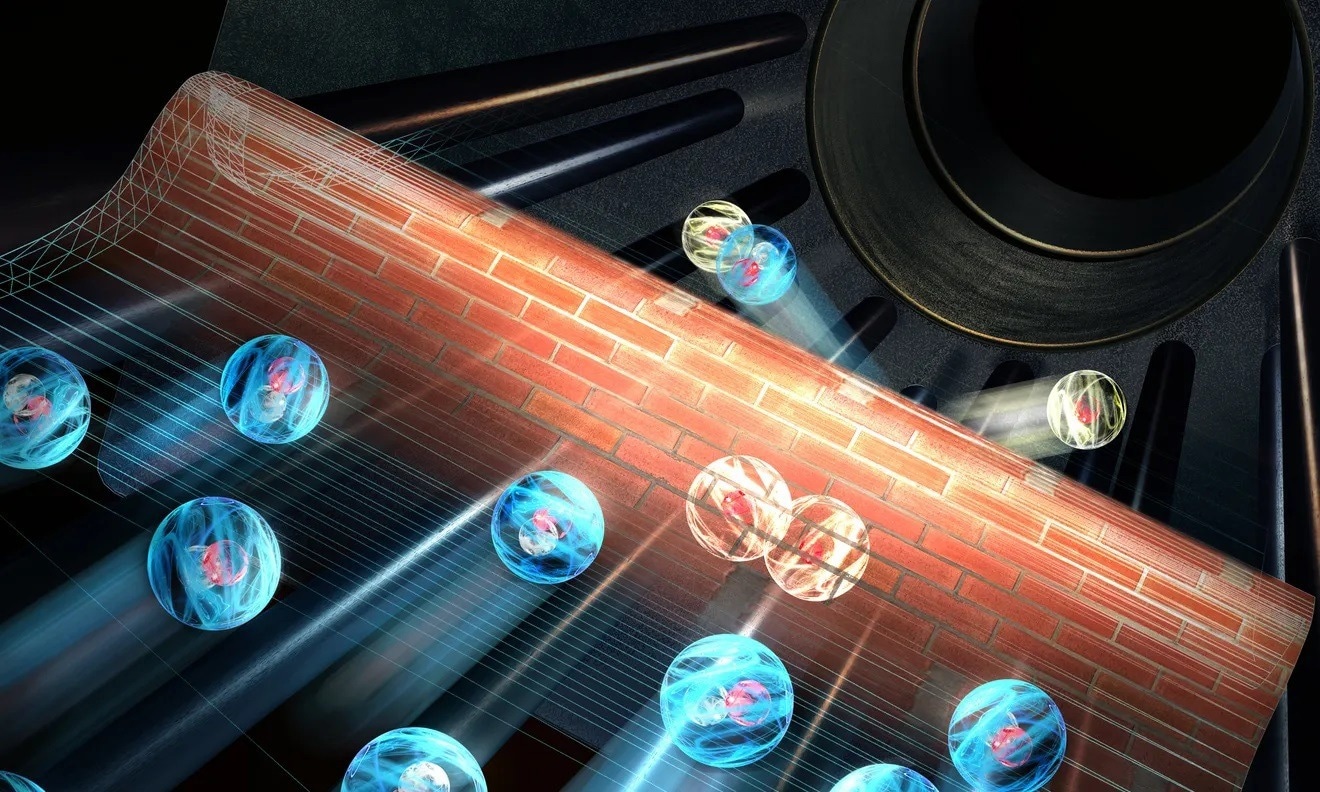A quantum mechanical tunneling reaction in experiments has been noted for the first time by Physicists headed by Roland Wester of the University of Innsbruck.
 Quantum mechanics allows particles to break through the energetic barrier due to their quantum mechanical wave properties. Image Credit: The University of Innsbruck.
Quantum mechanics allows particles to break through the energetic barrier due to their quantum mechanical wave properties. Image Credit: The University of Innsbruck.
In the study reported in Nature, the researchers offer a significant reference for this vital effect in chemistry. It is the slowest reaction with charged particles that have ever been noted.
As far as chemistry is concerned, tunneling reactions are very hard to predict. The quantum, mechanically exact description of chemical reactions with over three particles is hard; with more than four, it is nearly impossible.
Such reactions have been simulated by theorists with classical physics, ignoring quantum effects. The study questions where is the limit of this classical description of chemical reactions, which can only offer approximations?
Roland Wester from the Department of Ion Physics and Applied Physics at the University of Innsbruck wanted to explore this frontier for a long time.
It requires an experiment that allows very precise measurements and can still be described quantum-mechanically. The idea came to me 15 years ago in a conversation with a colleague at a conference in the U.S.
Roland Wester, Experimental Physicist, Department of Ion Physics and Applied Physics, University of Innsbruck
Wester also wished to trace the quantum mechanical tunnel effect in a very easy reaction.
As the tunnel effect makes the reaction improbable and slow, its experimental observation was extraordinarily hard. But following numerous attempts, Wester’s research team has currently been successful in doing just that for the first time.
Breakthrough After 15 Years of Research
For this experiment to be performed, hydrogen—the simplest element present in the universe—was selected by the research group of Roland Wester. Deuterium—a hydrogen isotope—was introduced into an ion trap, cooled down, and further filled the trap with hydrogen gas.
Due to the very low temperatures, the negatively charged deuterium ions tend to have a shortage of energy to react with hydrogen molecules traditionally. But in very rare cases, a reaction does take place when the two collide.
This is caused as a result of the tunnel effect.
Quantum mechanics allows particles to break through the energetic barrier due to their quantum mechanical wave properties, and a reaction occurs. In our experiment, we give possible reactions in the trap about 15 minutes and then determine the amount of hydrogen ions formed. From their number, we can deduce how often a reaction has occurred.
Roland Wester, Experimental Physicist, Department of Ion Physics and Applied Physics, University of Innsbruck
In this system, quantum tunneling occurs in only one in every hundred billion collisions in 2018, as per theoretical physicists’ assessment. This matches very closely with the outcomes that have been currently quantified in Innsbruck and, following 15 years of research, for the first time, verifies an accurate theoretical model for the tunneling effect happening in a chemical reaction.
Foundation for a Better Understanding
The tunnel effect may be exploited by other chemical reactions. Initially, a measurement is currently available that is also clearly understood in scientific theory. Depending on this, new studies can develop easier theoretical models for chemical reactions and then test them on the reaction that has been successfully illustrated at present.
For instance, the tunnel effect is utilized in the scanning tunneling microscope and flash memories. Also, the tunnel effect is utilized to describe the alpha decay of atomic nuclei.
A few astrochemical syntheses of molecules in interstellar dark clouds could also be described by involving the tunnel effect. Hence, the experiment of Wester’s team sets the stage for gaining deep insights into several chemical reactions.
The study was financially supported by the Austrian Science Fund FWF and the European Union, among others.
Journal Reference:
Wild, R., et al. (2023) Tunnelling measured in a very slow ion–molecule reaction. Nature. doi.org/10.1038/s41586-023-05727-z.